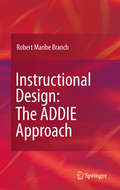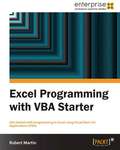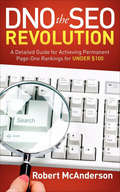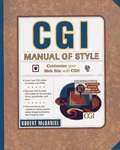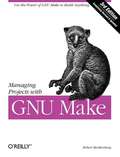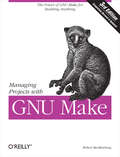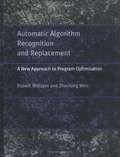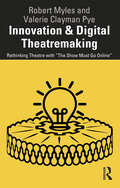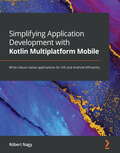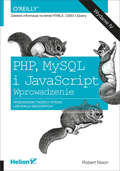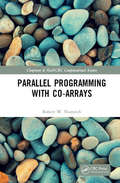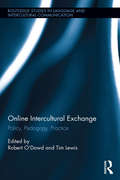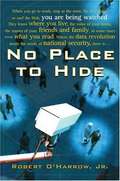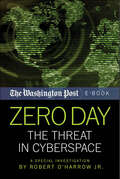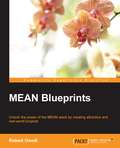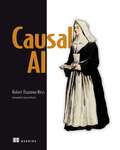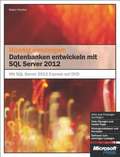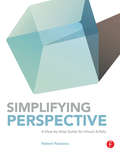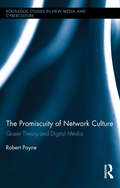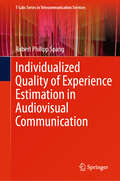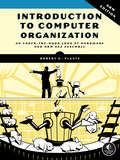- Table View
- List View
Instructional Design: The ADDIE Approach
by Robert Maribe BranchThe Analyze, Design, Develop, Implement, and Evaluate (ADDIE) process is used to introduce an approach to instruction design that has a proven record of success. Instructional Design: The ADDIE Approach is intended to serve as an overview of the ADDIE concept. The primary rationale for this book is to respond to the need for an instruction design primer that addresses the current proliferation of complex educational development models, particularly non-traditional approaches to learning, multimedia development and online learning environments. Many entry level instructional designers and students enrolled in related academic programs indicate they are better prepared to accomplish the challenging work of creating effective training and education materials after they have a thorough understanding of the ADDIE principles. However, a survey of instructional development applications indicate that the overwhelming majority of instructional design models are based on ADDIE, often do not present the ADDIE origins as part of their content, and are poorly applied by people unfamiliar with the ADDIE paradigm. The purpose of this book is to focus on fundamental ADDIE principles, written with a minimum of professional jargon. This is not an attempt to debate scholars or other educational professionals on the finer points of instructional design, however, the book's content is based on sound doctrine and supported by valid empirical research. The only bias toward the topic is that generic terms will be used as often as possible in order to make it easy for the reader to apply the concepts in the book to other specific situations.
Excel Programming with VBA Starter
by Robert MartinThis is a starter guide, covering the basics you need to get up and running as quickly as possible. This book is written for users of Excel who want to speed up and streamline normally arduous tasks for maximum productivity.
DNO the SEO Revolution: A Detailed Guide for Achieving Permanent Page-One Rankings for Under $100
by Robert McAndersonThe total number of searches conducted across all search engines in 2011, will exceed 300 Billion and will cost companies competing for these page-one listings in excess of 50 Billion Dollars. DNO the SEO Revolution is a how-to-guide for achieving Permanent page-one rankings for under $100. This one extraordinarily simple idea will shatter traditional SEO concepts allowing every reader the opportunity to gain multiple Page One Rankings. I know because I have achieved multiple rankings for my own company and a select number of customers who participated in our trials. Achieving the top three listings on Page One of Google for under $100 is an amazing accomplishment but for them to be permanently listed and not be under threat from competitors who are prepared to pay more for the ranked position is extraordinary. The use of SEO, PPC and SEM to achieve a Page One Google Ranking are expensive but more importantly they offer no permanency. Keyword auctions that encourage competitors to pay a higher price for the number one ranked position are insane and it is time to do things differently. Remember Einstein said, “The definition of insanity is doing the same thing over and over again and expecting a different result.” Act now before your competitor does or face the consequences of their domination over you.
CGI Manual of Style
by Robert McdanielAnyone can put a site up on the Web-but what makes people come back again and again? This indispensable reference is your guide to CGI (Common Gateway Interface), the key to tailoring your site to suit your visitors' needs by controlling and analyzing the flow of information on your site. No experience with C or Perl is assumed. Real-world examples are presented in easy-to follow tutorials.
Managing Projects with GNU Make, 3rd Edition
by Robert MecklenburgThe utility simply known as make is one of the most enduring features of both Unix and other operating systems. First invented in the 1970s, make still turns up to this day as the central engine in most programming projects; it even builds the Linux kernel. In the third edition of the classic Managing Projects with GNU make , readers will learn why this utility continues to hold its top position in project build software, despite many younger competitors. The premise behind make is simple: after you change source files and want to rebuild your program or other output files, make checks timestamps to see what has changed and rebuilds just what you need, without wasting time rebuilding other files. But on top of this simple principle, make layers a rich collection of options that lets you manipulate multiple directories, build different versions of programs for different platforms, and customize your builds in other ways. This edition focuses on the GNU version of make , which has deservedly become the industry standard. GNU make contains powerful extensions that are explored in this book. It is also popular because it is free software and provides a version for almost every platform, including a version for Microsoft Windows as part of the free Cygwin project. Managing Projects with GNU make , 3rd Edition provides guidelines on meeting the needs of large, modern projects. Also added are a number of interesting advanced topics such as portability, parallelism, and use with Java. Robert Mecklenburg, author of the third edition, has used make for decades with a variety of platforms and languages. In this book he zealously lays forth how to get your builds to be as efficient as possible, reduce maintenance, avoid errors, and thoroughly understand what make is doing. Chapters on C++ and Java provide makefile entries optimized for projects in those languages. The author even includes a discussion of the makefile used to build the book.
Managing Projects with GNU Make: The Power of GNU Make for Building Anything
by Robert MecklenburgThe utility simply known as make is one of the most enduring features of both Unix and other operating systems. First invented in the 1970s, make still turns up to this day as the central engine in most programming projects; it even builds the Linux kernel. In the third edition of the classic Managing Projects with GNU make, readers will learn why this utility continues to hold its top position in project build software, despite many younger competitors.The premise behind make is simple: after you change source files and want to rebuild your program or other output files, make checks timestamps to see what has changed and rebuilds just what you need, without wasting time rebuilding other files. But on top of this simple principle, make layers a rich collection of options that lets you manipulate multiple directories, build different versions of programs for different platforms, and customize your builds in other ways.This edition focuses on the GNU version of make, which has deservedly become the industry standard. GNU make contains powerful extensions that are explored in this book. It is also popular because it is free software and provides a version for almost every platform, including a version for Microsoft Windows as part of the free Cygwin project. Managing Projects with GNU make, 3rd Edition provides guidelines on meeting the needs of large, modern projects. Also added are a number of interesting advanced topics such as portability, parallelism, and use with Java.Robert Mecklenburg, author of the third edition, has used make for decades with a variety of platforms and languages. In this book he zealously lays forth how to get your builds to be as efficient as possible, reduce maintenance, avoid errors, and thoroughly understand what make is doing. Chapters on C++ and Java provide makefile entries optimized for projects in those languages. The author even includes a discussion of the makefile used to build the book.
Automatic Algorithm Recognition and Replacement: A New Approach to Program Optimization
by Robert Metzger Zhaofang WenParallel computation will become the norm in the coming decades. Unfortunately, advances in parallel hardware have far outpaced parallel applications of software. There are currently two approaches to applying parallelism to applications.
How to Use HTML 3.2
by Scott Arpajian Robert MullenA comprehensive, easy-to-use guide to html 3.2, the language of the worldwide web. If you're an aspiring web page author, an old hand or just curious about how it all works, this book is for you.
Innovation & Digital Theatremaking: Rethinking Theatre with “The Show Must Go Online”
by Valerie Clayman Pye Robert MylesInnovation & Digital Theatremaking introduces a blueprint for how to think differently about Theatre, how to respond creatively in uncertainty, and how to wield whatever resources are available to create new work in new ways. In 2020, the COVID-19 pandemic had a colossal impact on theatre across the world. At a time when even the wealthiest and best-supported theatre companies in the world ceased all operations and shuttered their stages, the theatre company The Show Must Go Online (TSMGO) forged its way into a new frontier: the highly accessible digital landscape of online performance. In this book, TSMGO creator Robert Myles and Valerie Clayman Pye explore the success of TSMGO from a practical standpoint, offering insights and strategies that can help theatremakers at every level respond proactively to the future of Theatre in the digital era. Each chapter addresses a different aspect of the creative process and concludes with take-homes so readers can learn how to innovate rapidly, undertake research and development in order to create their own models, and cultivate their own theatrical communities. Written for theatremakers, directors, producers, and creatives of all levels of experience, this book will help readers to think critically and creatively about theatre and theatre pedagogues to understand how to train their students for the theatre of the future.
At War with PTSD: Battling Post Traumatic Stress Disorder with Virtual Reality
by Robert N. McLayThe Spartans called it The Trembler; recent history has seen it termed shell shock, combat fatigue, soldier’s heart, and Vietnam Syndrome. Whatever the name, post traumatic stress disorder (PTSD) has always been with us. With 20 percent of the Veterans of the wars in Afghanistan and Iraq exhibiting PTSD symptoms, the United States military has a strong interest in combating the condition. Navy psychiatrist Robert N. McLay has been at the forefront of these efforts. This is his story of using virtual reality to treat Service Members and Veterans with PTSD.As a practicing psychiatrist who works with Veterans and civilians coping with PTSD, McLay had known for years before the September 11, 2001, attacks that effective treatments for the condition were elusive. When active duty called, he met the challenge, becoming the primary investigator on PTSD treatment projects that had Service Members face the ghosts of war in a computer simulator. After using this new form of exposure therapy on the home front, McLay and his team believed they had found a promising way to work with warriors broken by combat, so in 2008 they took it to the front line in Fallujah, Iraq, with the First Marine Expeditionary Force. Several years into the project, McLay recounts openly and with bleak honesty the successes, failures, and limits of virtual reality treatment for PTSD. Filled with poignant firsthand accounts of war and its psychological aftermath, At War with PTSD explains the difficulties of using this specialized technology in the field and discusses such challenges as helping people who refuse to believe in PTSD, including those diagnosed with it. So far, the virtual reality program shows more promise than traditional therapies. And although McLay remains unsure why or how, his experiences hold out hope for those suffering from this devastating disorder.
Simplifying Application Development with Kotlin Multiplatform Mobile: Write robust native applications for iOS and Android efficiently
by Robert NagyExplore the new Kotlin Multiplatform to build native apps for Android and iOS while sharing business logic between appsKey FeaturesImprove app development speed dramatically by writing the business logic in KotlinImplement a native user interface and work with platform-specific APIsLeverage Kotlin Multiplatform Mobile's code-sharing capabilities for your projectsBook DescriptionSharing code between platforms can help developers gain a competitive edge, and Kotlin Multiplatform Mobile (KMM) offers a sensible way to do it. KMM helps mobile teams share code between Android and iOS in a flexible way, leaving room for native development.The book begins by helping you to gain a clear understanding of the Kotlin Multiplatform approach, how it works, and how it is different from cross-platform technologies, such as React Native and Flutter, and code sharing options, such as C++. You'll then see how your team can use this software development kit (SDK) to build native applications more effectively by learning timeless concepts and working through practical examples. As you advance, you'll get to grips with the core concepts, understand why UI sharing fails, and get hands-on with developing a small KMM application. Finally, you'll discover expert tips and best practices, along with production- and adoption-related questions, that will help you take the next step in your project and career.By the end of this Kotlin book, you'll have gained a solid understanding of the capabilities of KMM and be able to share code between Android and iOS flexibly.What you will learnGet acquainted with the multiplatform approach and KMM's competitive edgeUnderstand how Kotlin Multiplatform works under the hoodGet up and running with the Kotlin language quickly in the context of SwiftFind out how to share code between Android and iOSExplore tips and best practices in KMM to increase app development efficiencyDiscover adoption tips to integrate KMM into existing or new production appsWho this book is forThis book is for native Android and iOS developers who want to build high-quality apps using an efficient development process. Knowledge of the framework and the languages used is necessary, that is, Android with Java or Kotlin and iOS with Objective-C or Swift. For Swift developers, the book assumes no knowledge of Kotlin as this will be covered in the context of Swift.
PHP, MySQL i JavaScript. Wprowadzenie. Wydanie IV
by Robert NixonPrzewodnik twórcy stron i aplikacji sieciowych!PHP wraz z baz? danych MySQL oraz j?zykiem JavaScript to pot??ne trio, dzi?ki któremu mo?esz zbudowa? aplikacj? internetow? dowolnej wielko?ci. Je?eli do tego do?o?ysz mo?liwo?ci najnowszej wersji j?zyka HTML (oznaczonej cyfr? 5), CSS3 oraz bibliotek? jQuery, nic nie b?dzie w stanie zatrzyma? Twojej kreatywno?ci.Je?eli chcesz opanowa? te narz?dzia i stworzy? atrakcyjn? oraz funkcjonaln? aplikacj? internetow?, trafi?e? na idealn? ksi??k?. Znajdziesz tu niezb?dn? wiedz? o j?zyku PHP, bazie danych MySQL, HTML5, CSS3, JavaScripcie i jQuery. Ju? od pierwszych stron zaczniesz poznawa? sk?adni? oraz konstrukcje j?zyka programowania PHP, techniki programowania obiektowego oraz praktyczne porady zwi?zane z u?ywaniem PHP. Nast?pnie uzupe?nisz wiedz? na temat bazy danych MySQL. Dowiesz si?, jak tworzy? zapytania SQL oraz w jaki sposób wykorzysta? dane zawarte w bazie z poziomu PHP. Po opanowaniu „strony serwerowej” przejdziesz do nauki technik tworzenia interaktywnych stron WWW. Zobaczysz, jak u?ywa? j?zyka JavaScript, jakie nowo?ci zawiera HTML5 oraz jak wielki potencja? kryj? w sobie CSS3 i jQuery. Ksi??ka ta jest ciekaw? lektur? dla pasjonatów chc?cych tworzy? w?asne, zaawansowane aplikacje. Dog??bnie opanuj j?zyk PHP, pocz?wszy od podstaw a? do metod programowania obiektowego. Zapoznaj si? z MySQL, od struktury bazy danych do skomplikowanych zapyta?. Naucz si? u?ywa? rozszerzenia MySQLi — udoskonalonego interfejsu PHP dla MySQL. Twórz dynamiczne strony PHP, które dostosowuj? si? do u?ytkownika. Zarz?dzaj ciasteczkami i sesjami, z zachowaniem wysokich standardów bezpiecze?stwa. Opanuj j?zyk JavaScript i wzboga? go z u?yciem jQuery. Wykorzystaj ??dania Ajax do komunikacji mi?dzy przegl?dark? a serwerem. U?yj CSS2 i CSS3 do opracowania profesjonalnej szaty graficznej stron WWW. Poznaj nowe funkcje HTML5, w tym geolokacj?, obs?ug? d?wi?ku i filmów oraz elementu canvas.Kompendium wiedzy dla twórcy stron i aplikacji sieciowych
Parallel Programming with Co-arrays (Chapman & Hall/CRC Computational Science)
by Robert NumrichParallel Programming with Co-Arrays describes the basic techniques used to design parallel algorithms for high-performance, scientific computing. It is intended for upper-level undergraduate students and graduate students who need to develop parallel codes with little or no previous introduction to parallel computing. It is also intended as a reference manual for researchers active in the field of scientific computing. All the algorithms in the book are based on partition operators. These operators provide a unifying principle that fits seemingly disparate techniques into an overall framework for algorithm design. The book uses the co-array programming model to illustrate how to write code for concrete examples, but it emphasizes that the important concepts for algorithm design are independent of the programming model. With these concepts in mind, the reader can write algorithms in different programming models based on personal taste and comfort.
Internationalising Higher Education and the Role of Virtual Exchange (Routledge Research in Higher Education)
by Robert O'DowdThis volume introduces Virtual Exchange (VE) as an innovative form of online intercultural learning and investigates the myriad of ways VE is being carried out across universities, ultimately arguing for its integration into university internationalisation policies and course curricula. Against the backdrop of increased digitalisation initiatives throughout universities given the effects of the pandemic, chapters focus not only on providing new research findings, but also on providing a comprehensive introduction and argumentation for the use of VE in university education and also in demonstrating how it can be put into use by both university decision-makers and educators. Reviewing the limitations of the activity, this timely work also fundamentally posits how VE and blended mobility more broadly could be developed in future higher education initiatives. This book will be of interest to researchers, academics, scholars, and students involved with Open & Distance Education and eLearning, approaches to internationalisation in education, and the study of higher education more broadly. Those interested in innovative methods for teaching and learning, as well as educational research, will also benefit from this volume.
Online Intercultural Exchange: Policy, Pedagogy, Practice (Routledge Studies in Language and Intercultural Communication #15)
by Tim Lewis Robert O'DowdThis volume provides a state of the art overview of Online Intercultural Exchange (OIE) in university education and demonstrates how educators can use OIE to address current challenges in university contexts such as internationalisation, virtual mobility and intercultural foreign language education. Since the 1990s, educators have been using virtual interaction to bring their classes into contact with geographically distant partner classes to create opportunities for authentic communication, meaningful collaboration and first-hand experience of working and learning with partners from other cultural backgrounds. Online exchange projects of this nature can contribute to the development of learner autonomy, linguistic accuracy, intercultural awareness, intercultural skills and electronic literacies. Online Intercultural Exchange has now reached a stage where it is moving beyond individual classroom initiatives and is assuming a role as a major tool for internationalization, intercultural development and virtual mobility in universities around the globe. This volume reports qualitative and quantitative findings on the impact of OIE on universities in Europe and elsewhere and offers comprehensive guidance on using OIE at both pedagogical and technological levels. It provides theoretically-informed accounts of Online Intercultural Exchanges which will relevant to researchers in Computer Assisted Language Learning, Computer-Mediated Communication, or Virtual Education. Finally, contributors offer a collection of practitioner-authored and practically-oriented case studies for the benefit of teachers of foreign languages or in other subject areas who wish to engage in developing the digital literacy and intercultural competences of their learners.
No Place to Hide
by Robert O'Harrow Jr.An award-winning reporter for The Washington Post, O'Harrow reviews some of the surveillance and identification technologies and procedures now being used by corporations and governments against the American people. He begins with the flood of measures adopted during the six weeks after the September 2001 attacks. Other topics include the data revolution, Total Information Awareness, and the government's eyes and ears. Annotation ©2007 Book News, Inc., Portland, OR (booknews.com)
Zero Day: The Threat in Cyberspace: A Special Investigation
by Robert O'Harrow Jr. The Washington PostWill the world&’s next war be fought in cyberspace? "It's going to happen," said former National Defense University Professor Dan Kuehl. So much of the world&’s activity takes place on the internet now– including commerce, banking and communications- that the Pentagon has declared war in cyberspace an inevitability. For more than a year, Washington Post reporter Robert O'Harrow has explored the threats proliferating in our digital universe. This ebook, ZERO DAY: THE THREAT IN CYBERSPACE, is a compilation of that reporting. With chapters built around real people, including hackers, security researchers and corporate executives, this book will help regular people, lawmakers and businesses better understand the mind-bending challenge of keeping the internet safe from hackers and security breaches- and all out war.
M.E.A.N. Blueprints
by Robert OnodiIf you are a web developer with a basic understanding of the MEAN stack, experience in developing applications with JavaScript, and basic experience with NoSQL databases, then this book is for you.
Causal AI
by Robert Osazuwa NessBuild AI models that can reliably deliver causal inference.How do you know what might have happened, had you done things differently? Causal AI gives you the insight you need to make predictions and control outcomes based on causal relationships instead of pure correlation, so you can make precise and timely interventions. Causal AI is a practical introduction to building AI models that can reason about causality. In Causal AI you will learn how to: • Build causal reinforcement learning algorithms • Implement causal inference with modern probabilistic machine tools such as PyTorch and Pyro • Compare and contrast statistical and econometric methods for causal inference • Set up algorithms for attribution, credit assignment, and explanation • Convert domain expertise into explainable causal models Author Robert Osazuwa Ness, a leading researcher in causal AI at Microsoft Research, brings his unique expertise to this cutting-edge guide. His clear, code-first approach explains essential details of causal machine learning that are hidden in academic papers. Everything you learn can be easily and effectively applied to industry challenges, from building explainable causal models to predicting counterfactual outcomes. Foreword by Lindsay Edwards. About the technology Traditional ML models can&’t answer causal questions like, &“Why did that happen?&” or, &“What factors should I change to get a particular outcome?&” This book blends advanced statistical methods, computational techniques, and new algorithms to create machine learning systems that automate the process of causal inference. About the book Causal AI introduces the tools, techniques, and algorithms of causal reasoning for machine learning. This unique book masterfully blends Bayesian and probabilistic approaches to causal inference with practical hands-on examples in Python. Along the way, you&’ll learn to integrate causal assumptions into deep learning architectures, including reinforcement learning and large language models. You&’ll also use PyTorch, Pyro, and other ML libraries to scale up causal inference. What's inside • End-to-end causal inference with DoWhy • Deep Bayesian causal generative AI models • A code-first tour of the do-calculus and Pearl&’s causal hierarchy • Code for fine-tuning causal large language models About the reader For data scientists and machine learning engineers. Examples in Python. About the author Robert Osazuwa Ness is an AI researcher at Microsoft Research and professor at Northeastern University. He is a contributor to open-source causal inference packages such as Python&’s DoWhy and R&’s bnlearn. Table of Contents Part 1 1 Why causal AI 2 A primer on probabilistic generative modeling Part 2 3 Building a causal graphical model 4 Testing the DAG with causal constraints 5 Connecting causality and deep learning Part 3 6 Structural causal models 7 Interventions and causal effects 8 Counterfactuals and parallel worlds 9 The general counterfactual inference algorithm 10 Identification and the causal hierarchy Part 4 11 Building a causal inference workflow 12 Causal decisions and reinforcement learning 13 Causality and large language models
Richtig einsteigen: Datenbanken entwickeln mit SQL Server 2012
by Robert PantherSQL Server 2012 und die kostenlose Version SQL Server 2012 Express sind ideal für den Einstieg in die professionelle Datenbankentwicklung. Sie können damit komplexere Datenbankprojekte verwirklichen, die die Funktionalität einer Desktop-Datenbank wie Microsoft Access übersteigen. Wenn Sie also gleich richtig in die Datenbankentwicklung mit einem professionellen Datenbankserver einsteigen wollen oder Ihre Access-Kennnisse auf den nächsten Level bringen möchten, ist dieses Buch genau das Richtige für Sie. Dazu vermittelt es sowohl die Datenbankgrundlagen als auch das Programmierwissen, das Sie benötigen, um die umfangreichen Möglichkeiten von SQL Server 2012 auszunutzen. Das Ganze ist in ein didaktisch ausgearbeitetes Konzept verpackt, das Ihnen mit vielen Übungen, praxisnahen Tipps und zusätzlichen Informationen auf der Website zum Buch einen gründlichen Einstieg ermöglicht. Das Buch basiert im Wesentlichen auf der kostenfrei erhältlichen Express Edition von SQL Server 2012. Alle Beispiele eignen sich aber auch für die größeren Editionen von SQL Server 2012.
Simplifying Perspective: A Step-by-Step Guide for Visual Artists
by Robert PastranaMaster the art of linear perspective. If you’re an animator, illustrator, comic book artist, game artist or anything in between, you need to be able to create images that accurately and realistically show space, dimension and form. Simplifying Perspective is the one and only guide that thoughtfully and clearly breaks down the principles of perspective into something that’s easy to understand and use. With approachable lessons and clear visual step-by-step instruction, Robert Pastrana provides you with powerful techniques that help you turn a troubled drawing into a living, breathing, dimensional scene. With Simplifying Perspective, you’ll never have to wade through dense, complex technical manuals again – this comprehensive guide to perspective is tailored specifically for artists who need to learn the ins and outs of one, two, and three-point perspective, measuring, shadows, reflections, and more. Simplifying Perspective presents complex drawing concepts in an easy-to-follow, approachable manner so you can finally learn the essentials of perspective without the anticipated frustration. Provides clarity, depth, and a wealth of examples – this is your must-have guide to understanding and using linear perspective Detailed visual instruction includes hundreds of color coded, step-by-step diagrams that allow you to easily follow the technical process of each construction Comprehensive companion website includes additional resources on perspective with a range of work to help further your skills
The Promiscuity of Network Culture: Queer Theory and Digital Media (Routledge Studies in New Media and Cyberculture)
by Robert PayneLiking, sharing, friending, going viral: what would it mean to recognize these current modes of media interaction as promiscuous? In a contemporary network culture characterized by a proliferation of new forms of intimate mediated sociality, this book argues that promiscuity is a new standard of user engagement. Intimate relations among media users and between users and their media are increasingly structured by an entrepreneurial logic and put to work for the economic interests of media corporations. But these multiple intimacies can also be understood as technologies of promiscuous desire serving both to liberalize mediated social connection and to contain it within normative frames of value. Payne brings crucial questions of gender, sexuality, intimacy, and attention back into conversation with recent thinking on network culture and social media, identifying the queer undercurrents of these current media dynamics.
Healthy SQL
by Robert Pearl"Robert Pearl, a well-known DBA in the SQL community, explains his holistic vision of a database instance that needs regular check-ups and gives the tools, scripts, and best practices he has collected over the years. " Alberto Bolchini, Computing Reviews, May 9, 2016 Healthy SQL is about ensuring the ongoing performance health of a SQL Server database. An unhealthy database is not just an inconvenience; it can bring a business to its knees. And if you are the database administrator, the health of your SQL Server implementation can be a direct reflection on you. It's in everyone's best interest to have a healthy SQL implementation. Healthy SQL is built around the concept of a medical checkup, giving you the tools you need to assess the current health of your database and take action to improve upon that health and maintain good performance to your business. Healthy SQL aids in developing a rigorous routine so that you know how healthy your SQL Server machines are, and how you can keep those same servers healthy and fit for duty. The book is filled with practical advice and a time-tested strategy, helping you put together a regimen that will ensure your servers are healthy, your implementation is fully optimized, your services are redundant and highly available, and you have a plan for business continuity in the event of a disaster. If your current environment doesn't match up with these criteria, then pick up a copy of Healthy SQL today and start your journey on the road to a fit and tight SQL Server deployment.
Individualized Quality of Experience Estimation in Audiovisual Communication (T-Labs Series in Telecommunication Services)
by Robert Philipp SpangThe book presents an in-depth exploration of the Individuality Assisted Estimation (IAE) model in the context of Quality of Experience (QoE) assessment for multimedia, specifically audiovisual communication. The book delves into how individual characteristics, including psychological traits and states, influence perceptions of multimedia quality. The book argues for the integration of individual differences into these assessments, hypothesizing that this approach can enhance the accuracy and relevance of QoE ratings. Through a series of experiments and analyses, the book rigorously evaluates the effectiveness of the IAE model, comparing it against traditional methods, and highlights its particular strengths in estimating task load. The research contributes to the field by emphasizing the importance of individuality in multimedia quality assessment and offering a practical, empirically validated approach for incorporating individual differences into QoE models.
Introduction to Computer Organization: ARM Edition
by Robert PlantzSee How the Magic Happens Built with ARM A64 Assembly LanguageThe ARM edition of Introduction to Computer Organization will show you how high-level code connects to computer hardware through ARM 64-bit assembly language. You&’ll learn ARM assembly language from the ground up, and all you&’ll need is some basic experience with programming. As you grow to understand ARM&’s 64-bit design (from first principles), you&’ll develop the skills to write more efficient, optimized code.Learn the fundamentals:Data storage formats and computer encodingBinary and hexadecimal arithmetic operationsBoolean algebra and logic gatesDigital circuit design Explore how software and hardware interact:Memory hierarchy, from CPU registers to the cloudCPU architecture and instruction executionARM 64-bit assembly language programming Get hands-on experience programming the GPIO on Raspberry Pi 3, 4, and 5 in assembly. Use GNU programming tools to examine code generated from C and C++ by the compiler, write assembly programs from scratch, and use the debugger to visualize execution, inspect registers, and understand machine-level operations. Each chapter includes practical &“Your Turn&” exercises to reinforce key concepts and build real-world programming skills.Whether you&’re optimizing code performance, developing embedded systems, or simply curious about how computers execute your programs, this guide provides deep insight into how software and hardware interact to bring programs to life.
